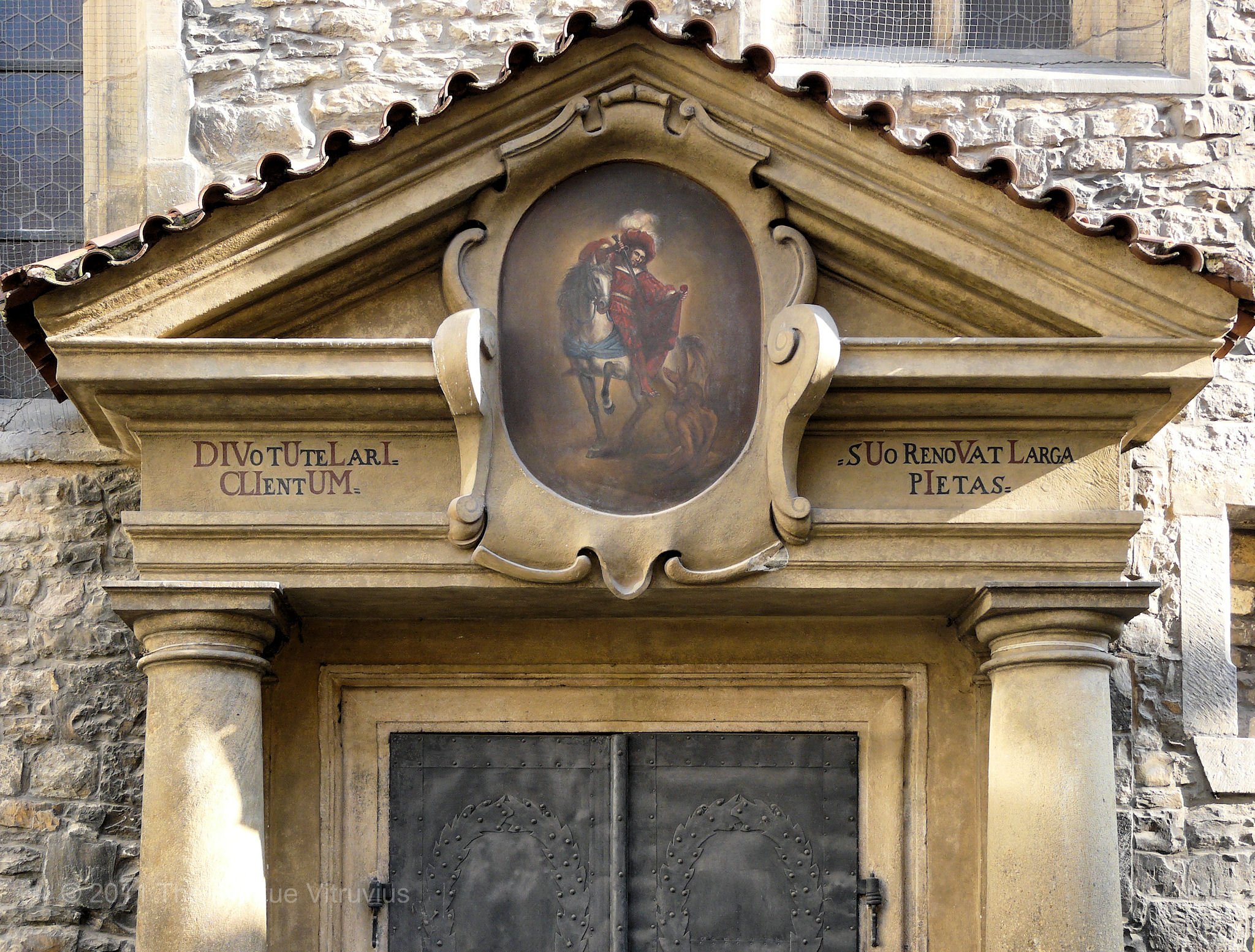Martinská 8: Church of Saint Martin-in-the-Wall
Saint Martin’s is one of the oldest churches in Prague. An original romanesque temple of 1178 (parts of which survive) was incorporated into the defensive wall of the Old Town some time in the 13th century, leading to the intriguing name. In the late 14th and early 15th centuries, the church was modified and extended: its chancel contains one of the earliest ribbed vaults in the region, and its unfaced exterior is original late gothic.
The church played a significant role in the Hussite reforms of the early 15th century. In 1414, the local priest Jan of Hradec, under the influence of the reformer Jakub of Mies, became the first parish priest to administer Holy Communion to the congregation ‘in both kinds’, i.e. in the form of both consecrated bread and wine. The distribution of the eucharist in this way was in direct contradiction to the Council of Constance, which explicity forbade the practice. It was one of the reasons for the execution of Jan Hus the following year.
The neo-classical pediment attached to the gothic north wall carries the inscription ‘The generous piety of his Servants renovated [this church] to God their Protector’, with a chronogram giving the date of the addition as 1779. A baroque cartouche contains the traditional image of St Martin of Tours donating his cloak to a beggar. Five years after the portal was added, the church was closed as a result of Josef II’s Edict of Tolerance. It was not restored until 1905.











